2025 02 Feb Luxor
Our final tomb was KV09: Rameses V and Rameses VI. Here we find a huge amount of art, not all of it by competent artists though they are all very keen on depicting bound and decapitated enemies. The tomb is of five long corridors connected by nine gates and a couple of chambers en route. The corridors are really steps, descending into the rock but as this is where all the art is, one takes one’s time and appreciates the fact that it is not that steep.


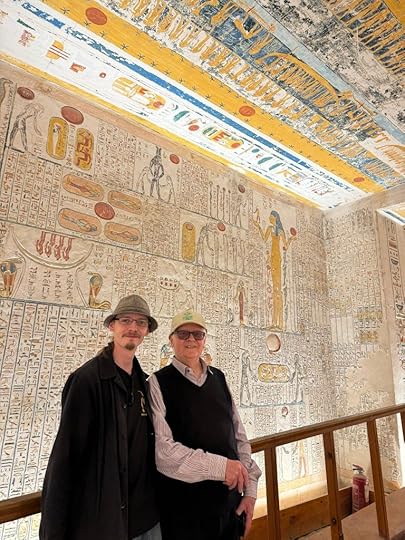

The ceiling paintings in the burial chamber of the Book of the Day and the Book of the Night were really extraordinary but, as usual, I wished we had Tom Hardwick or another knowledgeable Egyptologist with us to explain it all. Their pantheon was so complicated and kept changing.



Then it was back on the jitney to the car and an English pub – so called – in Luxor. The only great thing about The Kings Head Pub is that they use the face of Akhenaten as the King in their inn sign, but Theo was amused to see what they regarded as an English pub. They try and refill your glass when it is still half full so it becomes impossible to tell how many glasses you have had. The food, like most food we had, was terrible, but I’m glad we went.
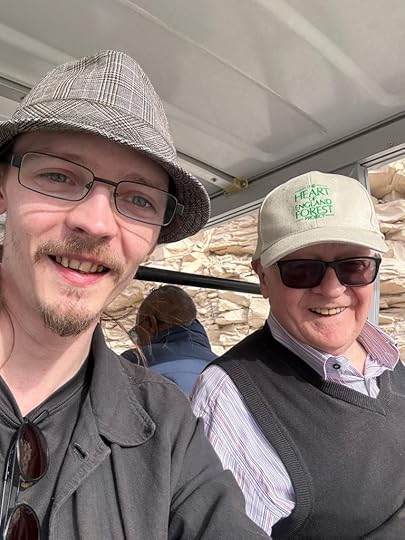


February 7th was our last full day in Luxor. We went first to Medinet Habu, the mortuary temple of Rameses III. This is one of the least visited sites in Luxor, perhaps because it is easier for tour organisers to concentrate on the Valley of the Kings where everything is in one place. There were few people there. We ignored the Ptolemaic entrance and headed straight to the First Pylon which is over 1000 years older. The Habu temple is second only to Karnak in size and has huge, deeply cut reliefs of Rameses ‘s various triumphs in battle. They estimated the number of enemy dead by counting the number of hands and genitals sliced from their bodies, as shown in the First Pylon relief. Gruesome stuff. Adjacent to the pylon are the remains of the Royal Harem. Unfortunately, it was closed, but had we known, you can see where the Pharaoh ‘frolicked’ with his harem, as the Eye Witness guide puts it, as the outer wall of the second floor apartments is missing. Bring binoculars. Here Theo examines the relief of Rameses’ staff counting piles of hands, and a view of the dancing girls in the harem, which is where, of course, R III met his death by a large sword. Maybe from the very wife, seen here being tickled under her chin (I didn’t take this, I found that on the net).



Then came the First Court, where the reliefs of real battles are, which is enclosed by a spectacular set of Osiride columns showing Rameses III. I think it must be the fact that these come from the very beginning of Western Civilisation, they were there long before the Greeks, quite apart from the Romans and all the squabbling empires since, that makes them so awesome. And if course the workmanship which is often very delicate and obviously the work of a true artist. As Maria Golia lives right next door, we went for a late coffee with her before heading back across the river. Here’s Theo outside her village.

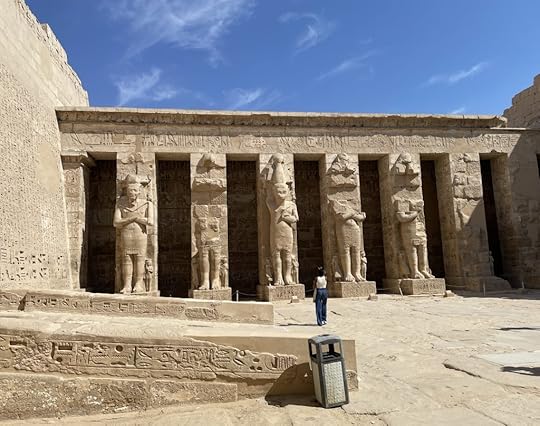
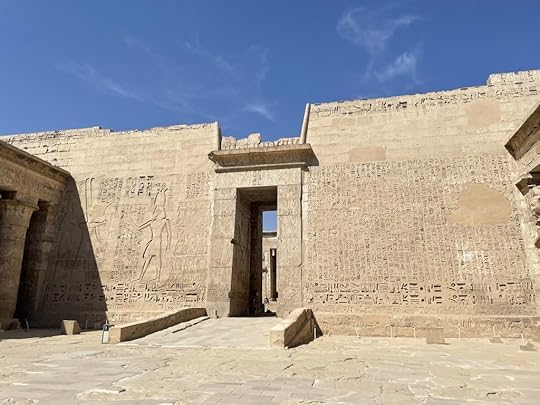
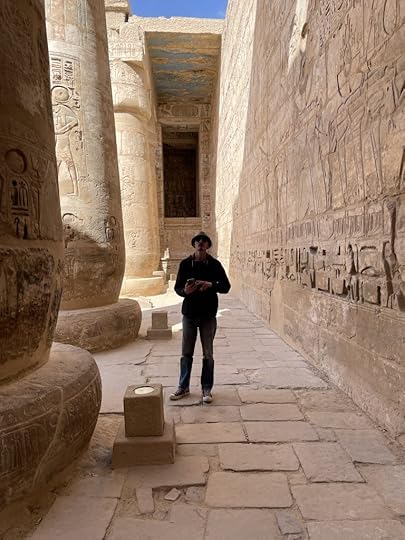
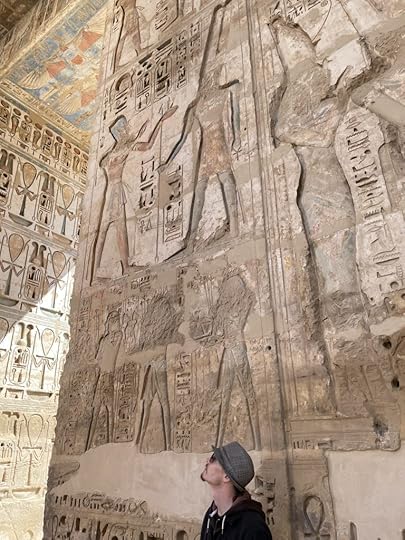

Next day it was goodbye to the Nefertiti. I was getting quite fond of living there with all the cab drivers jostling to hustle you just outside the entrance to the alley, except for the food that is.
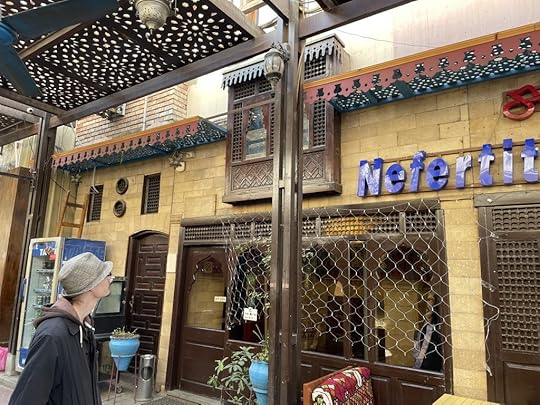

We flew to Cairo and returned to our old rooms at the Carlton. We just had time to have lunch with Mira Shihadeh whom we met at Maria’s place next to the Habu temple. She suggested that we meet at Café Riche. Just two blocks from Tahrir Square, on Talaat Harb Street, this has been the centre for dissent and literature, intellectuals and revolutionaries for over a century. It was founded in 1908 and features all the usual faded photographs of celebrities and souvenir paintings and artifacts of memorable dinners or celebrations that make this type of café so great. Most towns have one: there are lots in Paris of course: La Coupole, le Select, le Deux Magots, Café de Flore, la Closerie des Lilas, Le Dome and le Procope; Berlin has the Paris Bar; Barcelona has Els Quatre Gats; Madrid the Café Comercial; I suppose the Caffè Florian in Venice would have to count though it’s hardly welcoming to writers these days; the Café Central in Vienna; maybe even the revived Cabaret Voltaire in Zurich. So Café Riche is one of these. Its two most famous patrons were the future president Abdel Nasser, who plotted the overthrow of King Farouk there and Nobel prizewinning novelist Naguib Mahfouz who used it as his personal club, Umm Kulthum was once the resident singer. So a perfect place to meet. It also serves alcohol. In fact, the house wine was the best I had in Egypt. The food: ho-hum, but cheap.
It was great to see Mira again. She filled in details of her life: MA in psychology then 20 years as a yoga instructor, but now a figurative painter, inspired very much by graffiti-street art and the MeToo movement. What was fascinating was to hear of the fear and stress, excitement and exhilaration of the 2011 revolution in Egypt when the Café Riche became a shelter for demonstrators and the injured. Naturally we also talked of the Israeli attempts to depopulate Palestine by killing off its population; the hours of interrogation before she is allowed into her own country to visit relatives. It all brings home the day-to-day problems faced by Palestinians in the face of the occupying Israelis. One day they will get their land back, but I doubt I’ll be around to see it. Here we are at Café Riche, the next day back in Blighty.

Barry Miles's Blog
- Barry Miles's profile
- 152 followers



